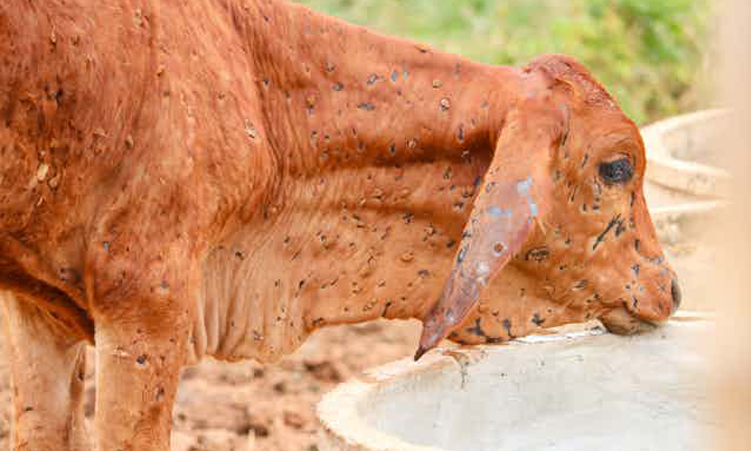A SCHOOLGIRL at Elambo Combined School in the Oshikoto Region died suddenly at her parents’ home at Ohashipepe village yesterday morning, the Councillor of Eengodi Constituency has told The Namibian.
Councillor Walde Sheyavali said the girl, Ndiipanda Titus, became sick and died while her parents were preparing to take her to the clinic. Another teenager from the same village was taken to Onandjokwe Lutheran Hospital yesterday with suspected meningitis.A boy from Omakunde village in the same Eengodi Constituency, Lukas Akapa, died of meningitis at the Onandjokwe Hospital at the beginning of last month.”We have a really big problem with this meningitis disease.The villagers are in a panic situation at the moment, and I think the Ministry of Health has to act quickly to do something about this disease,” Councillor Sheyavali said yesterday.”We cannot wait until many people have died, and then act.We have to start with the necessary measures now to safe lives,” he said.The Under Secretary of Health and Social Services, Dr Norbert Forster, on Wednesday confirmed that 13 cases of meningitis had been reported in the northern regions, but said people shouldn’t panic.He added that the situation was under control and the number of cases was too low to describe it as an outbreak.Nine of these patients are being treated at Onandjokwe hospital and are from villages in Eengodi Constituency.The Oshakati State Hospital in Oshana Region has reported two cases and Katima Mulilo State Hospital in the Caprivi Region has also reported two cases so far, Dr Forster told a news conference at Onandjokwe on Wednesday.When approached by The Namibian yesterday, Dr Forster confirmed the death of Ndiipanda Titus, but said it had not been determined whether meningitis was the cause.”We still have to investigate the cause of her death,” he said.Councillor Sheyavali told The Namibian late yesterday afternoon that villagers at Oshipepe had buried Titus yesterday already.Dr Forster said a team of health workers was sent from Windhoek to Onamishu yesterday and would start with a thorough investigation today.Councillor Sheyavali told The Namibian that the Ministry of Education had organised a big event at Onamishu to commemorate International Literacy Day today.Because of the meningitis cases, the event was called off.The Director of Education in Oshikoto Region, Esther Nghipondoka, confirmed this, saying that such a large gathering of people could pose a health risk.She said she was also worried about meningitis spreading among school children in the region.Meningitis can be caused by bacteria or a virus.It is contagious but one cannot catch it as easily from someone else as a cold or flu.It is spread through the saliva of an infected person, for example if a sick person coughs on you or shares your spoon or cup.Children and young people get meningitis more often than adults, because they kiss each other and share cooldrinks and snacks.High fever, headache, and a stiff neck are common symptoms of meningitis in anyone over the age of two years.These symptoms can develop over several hours, or they may take one to two days.Other symptoms may include nausea, vomiting, discomfort looking into bright lights, confusion, and sleepiness.In babies, the classic symptoms of fever, headache, and neck stiffness may be absent or difficult to detect, and the infant may only appear slow or inactive, or be irritable, vomit, or be feeding poorly.Another teenager from the same village was taken to Onandjokwe Lutheran Hospital yesterday with suspected meningitis.A boy from Omakunde village in the same Eengodi Constituency, Lukas Akapa, died of meningitis at the Onandjokwe Hospital at the beginning of last month.”We have a really big problem with this meningitis disease.The villagers are in a panic situation at the moment, and I think the Ministry of Health has to act quickly to do something about this disease,” Councillor Sheyavali said yesterday.”We cannot wait until many people have died, and then act.We have to start with the necessary measures now to safe lives,” he said.The Under Secretary of Health and Social Services, Dr Norbert Forster, on Wednesday confirmed that 13 cases of meningitis had been reported in the northern regions, but said people shouldn’t panic. He added that the situation was under control and the number of cases was too low to describe it as an outbreak.Nine of these patients are being treated at Onandjokwe hospital and are from villages in Eengodi Constituency.The Oshakati State Hospital in Oshana Region has reported two cases and Katima Mulilo State Hospital in the Caprivi Region has also reported two cases so far, Dr Forster told a news conference at Onandjokwe on Wednesday.When approached by The Namibian yesterday, Dr Forster confirmed the death of Ndiipanda Titus, but said it had not been determined whether meningitis was the cause.”We still have to investigate the cause of her death,” he said.Councillor Sheyavali told The Namibian late yesterday afternoon that villagers at Oshipepe had buried Titus yesterday already.Dr Forster said a team of health workers was sent from Windhoek to Onamishu yesterday and would start with a thorough investigation today.Councillor Sheyavali told The Namibian that the Ministry of Education had organised a big event at Onamishu to commemorate International Literacy Day today.Because of the meningitis cases, the event was called off.The Director of Education in Oshikoto Region, Esther Nghipondoka, confirmed this, saying that such a large gathering of people could pose a health risk.She said she was also worried about meningitis spreading among school children in the region.Meningitis can be caused by bacteria or a virus.It is contagious but one cannot catch it as easily from someone else as a cold or flu.It is spread through the saliva of an infected person, for example if a sick person coughs on you or shares your spoon or cup.Children and young people get meningitis more often than adults, because they kiss each other and share cooldrinks and snacks.High fever, headache, and a stiff neck are common symptoms of meningitis in anyone over the age of two years.These symptoms can develop over several hours, or they may take one to two days.Other symptoms may include nausea, vomiting, discomfort looking into bright lights, confusion, and sleepiness.In babies, the classic symptoms of fever, headache, and neck stiffness may be absent or difficult to detect, and the infant may only appear slow or inactive, or be irritable, vomit, or be feeding poorly.
Stay informed with The Namibian – your source for credible journalism. Get in-depth reporting and opinions for
only N$85 a month. Invest in journalism, invest in democracy –
Subscribe Now!










